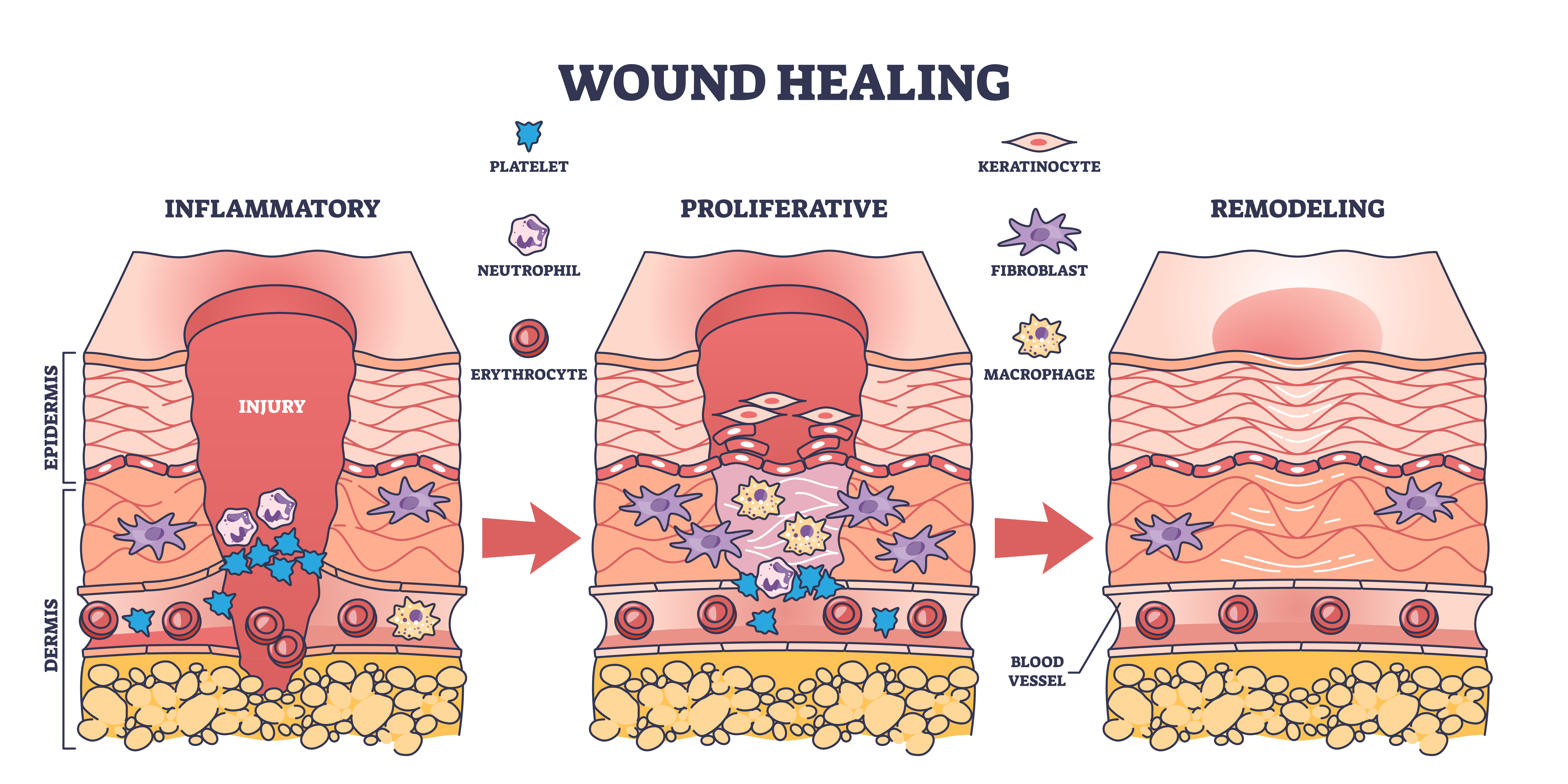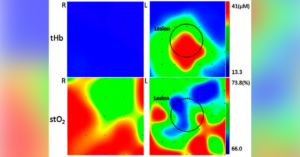Understanding the Wound Healing Process: A Comprehensive Approach in PACE
- By Wish Clinic
- In Articles

The wound healing process is a complex and multi-phased journey that is essential for the recovery of patients with chronic wounds. At PACE, we have developed a unique model that not only addresses the various phases of the wound healing process but also ensures that every participant receives comprehensive care tailored to their specific needs.
The Phases of Wound Healing in PACE
The wound healing process is traditionally divided into four distinct phases: hemostasis, inflammation, proliferation, and remodeling. Each phase plays a critical role addresses the various phases of wound healing and in the successful healing of wounds, especially in a population with chronic conditions.
Hemostasis: This initial phase involves the immediate response to injury, where the body works to stop bleeding and stabilize the wound. In PACE, we utilize advanced wound dressings and techniques to ensure that this phase is effectively managed, minimizing the risk of complications.
Inflammation: During the inflammatory phase, the body’s immune response is activated to prevent infection and begin the healing process. At PACE, our interdisciplinary team closely monitors this phase to address any signs of infection or delayed healing, which are common in chronic wounds.
Proliferation: The proliferative phase of wound healing is marked by the formation of new tissue and blood vessels. In PACE, we use therapies like negative pressure wound therapy (NPWT) and electrical stimulation to accelerate tissue regeneration and wound closure, ensuring that wounds heal efficiently.
Remodeling: The final phase, remodeling, involves the maturation and strengthening of the new tissue. Our focus during this phase is on preventing wound contracture and ensuring that the healed wound has optimal strength and flexibility, reducing the risk of re-injury.
Advanced Wound Healing Strategies at PACE
![]() At PACE, we employ a variety of wound healing strategies to address the diverse needs of our participants. These include:
At PACE, we employ a variety of wound healing strategies to address the diverse needs of our participants. These include:
Compression Therapy: Essential for managing venous leg ulcers, compression therapy promotes venous return and reduces edema, facilitating faster wound healing.
Moist Wound Management: Keeping the wound environment moist is crucial for promoting tissue repair and preventing desiccation. Our team uses specialized wound dressings that maintain an ideal moisture balance to support the healing process.
Negative Pressure Wound Therapy (NPWT): NPWT is a cornerstone of our wound care strategy, especially for chronic wounds. By applying controlled suction to the wound, NPWT promotes faster healing and reduces the risk of infection.
Addressing Chronic Wounds in the PACE Model
![]() Chronic wounds, such as diabetic foot ulcers and pressure injuries, present significant challenges in wound management. These wounds often require a more intensive approach, combining various therapies to achieve optimal outcomes. At PACE, we have protocols in place to ensure that every participant with a chronic wound receives individualized care that addresses both the wound and the underlying health conditions that may impede healing.
Chronic wounds, such as diabetic foot ulcers and pressure injuries, present significant challenges in wound management. These wounds often require a more intensive approach, combining various therapies to achieve optimal outcomes. At PACE, we have protocols in place to ensure that every participant with a chronic wound receives individualized care that addresses both the wound and the underlying health conditions that may impede healing.
The Role of the Interdisciplinary Team in Wound Healing
![]() Our success in wound management is largely due to the collaborative efforts of our interdisciplinary team. Each member, from wound care nurses to rehabilitation therapists, plays a vital role in the healing process. By working together, we ensure that all aspects of wound care, from initial injury to full recovery, are addressed comprehensively.
Our success in wound management is largely due to the collaborative efforts of our interdisciplinary team. Each member, from wound care nurses to rehabilitation therapists, plays a vital role in the healing process. By working together, we ensure that all aspects of wound care, from initial injury to full recovery, are addressed comprehensively.
The Future of Wound Healing in PACE
As we continue to refine our approach to wound care, we remain committed to advancing the field through innovation and collaboration. The PACE model offers a glimpse into the future of wound management, where holistic care and advanced therapies work in tandem to heal wounds and improve the quality of life for our participants.
![]() In conclusion, the wound healing process in PACE is more than just treating wounds; it’s about providing a complete care plan that addresses the whole patient. By focusing on the phases of wound healing and utilizing advanced therapies, we are setting new standards in wound care that could serve as a model for the broader healthcare community.
In conclusion, the wound healing process in PACE is more than just treating wounds; it’s about providing a complete care plan that addresses the whole patient. By focusing on the phases of wound healing and utilizing advanced therapies, we are setting new standards in wound care that could serve as a model for the broader healthcare community.
You may also like

Near Infrared Spectroscopy: A Game-Changer in Wound Care
- March 20, 2025
- by Wish Clinic
- in Articles

Revolutionizing Wound Care: Innovative Treatments at The WISH Clinic


